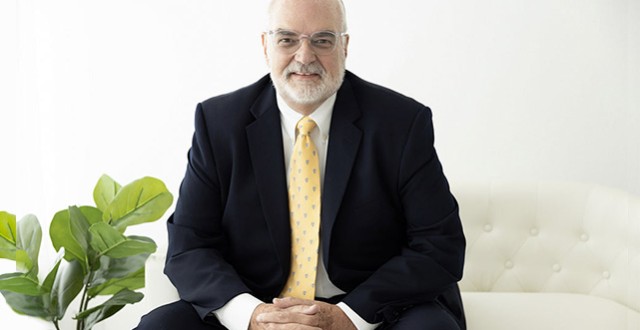
- Mediation
- Arbitration
- Court Neutrals
- Online Dispute Resolution
- Technology
- Court Decisions
- More
- Legislation
- Healthcare
- Guest Posts
- John DeGroote
- John C. Fleming
- Rick Freeman
- Professor Peter Friedman
- Honorable W. Royal Furgeson, Jr.
- James M. Gaitis
- Laura A. Kaster
- Professor John Lande
- Philip J. Loree, Jr.
- Michael McIlwrath
- F. Peter Phillips
- Professor Alan Scott Rau
- Professor Thomas J. Stipanowich
- Professor S.I. Strong
- Richard Webb
- Glen M. Wilkerson
- International arbitration
- Regulation
- Sports and Entertainment
- We’re Back!!!!Well, it’s been a while since we published and that is about to change. Since I spent much of last year becoming
 JAMS Welcomes Karl Bayer to its Panel of NeutralsJAMS, the world’s largest private alternative dispute resolution (ADR) provider, is pleased to announce that Karl Bayer
JAMS Welcomes Karl Bayer to its Panel of NeutralsJAMS, the world’s largest private alternative dispute resolution (ADR) provider, is pleased to announce that Karl Bayer Class Action Waivers in Arbitration Agreements: The Twenty-First Century Arbitration Battleground and Implications for the EU CountriesLinda S. Mullenix, Morris & Rita Atlas Chair in Advocacy at the University of Texas School of Law, has written “Class Ac
Class Action Waivers in Arbitration Agreements: The Twenty-First Century Arbitration Battleground and Implications for the EU CountriesLinda S. Mullenix, Morris & Rita Atlas Chair in Advocacy at the University of Texas School of Law, has written “Class Ac Picking the Proper Technological Tool for Problem-Solving in ArbitrationProfessor Amy J. Schmitz, John Deaver Drinko-Baker & Hostetler Chair in Law and Co-Director of the Translational Data An
Picking the Proper Technological Tool for Problem-Solving in ArbitrationProfessor Amy J. Schmitz, John Deaver Drinko-Baker & Hostetler Chair in Law and Co-Director of the Translational Data An
Recent Posts
Patients Engage in Their Own Care More Often When Encouraged by Providers
By Holly Hayes An article in the March/April 2010 Patient Safety and Quality Healthcare Magazine by Andrea C. Scobie and D. David Persaud titled, “Patient Engagement in Patient Safety:Barriers and Facilitators” examines the impact of patient engagement in their own care on patient safety. Read more here. The authors give examples of the technical issues in care provision (for example, patient identification, surgical site identification and wound management) that are essential to reduce adverse events and improve patient safety and point to recent studies that have begun to target the patient as an integral member of the care team with an ability to impact the reduction of medical errors. One barrier to patient engagement, of interest to the field of conflict resolution, is: Traditional Patient and Provider Roles The traditional patient-provider relationship has also been identified as an impediment to greater patient participation in patient safety. Three major patient safety studies in the United States (Marella et al., 2007; Waterman et al., 2005; Davis et al., 2008) identified that patients feel less comfortable asking direct and confrontational questions of their providers, such as, “Did you wash your hands?” or asking if the physician could mark their surgical site. Davis et al. (2008) also found that patients are less willing to adhere to patient safety practices that they view as challenging to the healthcare staff’s clinical abilities. This was somewhat mitigated by the healthcare professional’s designation, with more individuals willing to ask challenging questions of nurses than of physicians. Waterman et al. (2005) reported similar results with only 45.5% of the respondents indicating that they would feel comfortable asking medical personnel whether they had washed their hands. Even more shocking was the fact that only 4.5% of respondents actually did ask their care provider if they had washed their hands, indicating a large discrepancy between feeling comfortable to perform an error prevention action and actually performing that action. The traditional patient-physician relationship, in which the physician is perceived to have more knowledge about individual health concerns, is an impediment to patients asking questions of their physician, even if they feel that that their safety might be compromised and that they could play a role in preventing an error. This disconnect might point to broader cultural issues. The authors provide a list of “Facilitators” to break down these barriers and encourage patients to engage in their care provision, with one example being: Provider Modelling One of the most commonly cited facilitators of patient engagement in patient safety is provider behavior or physician modelling. Patients are less likely to engage in behavior that they perceive to be confrontational or challenging. Davis et al. (2007) found that when patients were instructed by a doctor to ask challenging questions of themselves and nurses, patient willingness to ask was significantly increased. Thus, physician instruction and education surrounding the reasons why patients should ask questions may have a significant impact on patient error prevention behaviors. Waterman et al. (2006) found similar results with their survey and suggest physician modelling as an integral part of patient education of patient safety practices. The authors propose that patient safety programs should target patient fears about challenging and insulting their healthcare provider by posting education material in hospital and waiting rooms encouraging patients to ask questions or having providers wear reminder buttons that encourage patients to ask them if they’ve washed their hands (Waterman et al., 2006). Fundamentally, provider modelling and education surrounding the acceptability of asking healthcare providers questions should ultimately lead to greater patient comfort in engaging in these behaviors. Hibbard et al. (2005) also suggest that training patients to be more assertive in their encounters with healthcare providers may lead to greater involvement in error prevention behaviors, as it has previously been shown to enhance patient involvement in their own care and improve care outcomes. This article supports the National Patient Safety Foundation report on the need for medical schools to provide training in patient safety, conflict resolution, and communication skills. See more on our post here. We welcome your comments on this topic. Holly Hayes is a mediator at Karl Bayer, Dispute Resolution Expert where she focuses on mediation of health care disputes. Holly holds a B.A. from Southern Methodist University and a Masters in Health Administration from Duke University. She can be reached at: holly@karlbayer.com.
Continue reading...GUEST-POST | Professor Stipanowich Comments on Stolt-Nielsen v. AnimalFeeds
By Thomas J. Stipanowich The thrust of the majority opinion authored by Justice Alito was to shun the rationale of the plurality in the Court’s earlier decision in Green Tree Financial Corp. v. Bazzle, 539 U.S. 444 (2003)), which characterized the question of whether class arbitration as a matter of “procedure” growing out of the dispute. Instead, the majority founded its decision on Supreme Court “precedents [under the FAA] emphasizing the consensual basis of arbitration.” The majority thus brings into play the body of substantive law of arbitrability that has grown up around the Federal Arbitration Act in the last quarter-century-and which preempts contrary state law. The majority explains that “[w]hile the interpretation of an arbitration agreement is generally a matter of state law, . . . the FAA imposes certain rules of fundamental importance, including the basic precept that arbitration “is a matter of consent, not coercion.” The contractual foundation of arbitration facilitates party choices-including “who will resolve specific disputes,” and “with whom they choose to arbitrate.” Here, where the parties’ agreement was silent as to the issue of class-action arbitration-and, indeed, had stipulated that there was “no agreement” on the matter-there could no basis upon which to authorize class arbitration: “[T]he differences between bilateral and class-action arbitration are too great for arbitrators to presume, consistent with their limited powers under the FAA, that the parties’ mere silence on the issue of class-action arbitration constitutes consent to resolve their disputes in class proceedings.” Such a result could not be inferred “solely from the fact of the parties’ agreement to arbitrate” because class-action arbitration “changes the nature of arbitration” in various ways: (1) the arbitrator is charged with resolving not just a single dispute, “but instead resolves many disputes between hundreds or thousands of parties”; (2) the “presumption of privacy and confidentiality” is lost; (3) the arbitrator’s award “adjudicates the rights of absent parties”; and (4) the commercial stakes are particularly significant, as in class-action litigation. Thus, the majority concludes that, as a matter of federal law, there can be no class-action arbitration when the parties have stipulated there is “no agreement” on the matter. While the present decision fits more squarely than Bazzle within the general body of American precedents involving multi-party conflict and multiple arbitration agreements (see IAN R. MACNEIL, RICHARD E. SPEIDEL & THOMAS J. STIPANOWICH, FEDERAL ARBITRATION LAW: AGREEMENTS, AWARDS & REMEDIES UNDER THE FEDERAL ARBITRATION ACT, Ch. 33 “Consolidation of Hearings”), the majority decision is likely to contribute to the controversy currently swirling around “waiver of class action” provisions in arbitration clauses in consumer and employment contracts. Though the Alito opinion stops short of “decid[ing] what contractual basis may support a finding that the parties agreed to authorize class-action arbitration,” it may be perceived by some as a clear signal of the Court’s lack of receptiveness to concerns about the impact of arbitration provisions on plaintiffs’ ability to bring class actions. The latter concerns, however, are sharply focused on the context of standardized contracts of adhesion, while the present case involved arms-length bargaining between sophisticated parties. Alito alludes to this in a footnote criticizing the arbitration panel for relying on “cited arbitration awards [,none of which] involved a contract between sophisticated business entities.” There is therefore room for surmise about how the Court would handle the class-action issue in an adhesion contract setting. Might a moderate judge find in an appropriate case that the “consensual dictates” of the FAA give way in any respect to the moderating realities of mass contracting? It remains to be seen. For those concerned about the finality of arbitration awards and the purview of judicial scrutiny, the majority decision presents us the rare specter of the nation’s High Court vacating a commercial arbitration award. (The Court did so in Commonwealth Coatings Corp. v. Casualty Co., 393 U.S. 145 (1968), and in so doing mightily reinforced the perceived breadth of the concept of “evident partiality.”) Although, as it maddeningly did in Hall Street, the Court refused to give clear direction on the status of the doctrine of “manifest disregard of the law,” the majority nevertheless decided that if such a standard indeed exists, it was met! The logic goes as follows: the arbitration panel failed to consider what body of law governed the issue of class arbitration, but instead rested its decision on a public policy argument supporting the concept. Such considerations must, however, give way to the preemptive “consensual foundation” established by the FAA-and the arbitrators’ failure to recognize and adhere to this approach was an act “in excess of their powers” and, furthermore, in “manifest disregard” of fundamental FAA precepts. (Justice Ginsberg’s dissent, joined by Justices Stevens and Breyer, questioned not only the level of scrutiny applied by the majority but, moreover, the ripeness of the matter for judicial action.) While it is highly doubtful that the majority actively contemplated (or relishes) the prospect, there is no doubt that many hopeful attorneys will seize on the wisp of a possibility that the gates of vacatur have finally opened. The majority also borrowed, for the first time in a commercial arbitration decision and somewhat anachronistically, the maxim from the collective bargaining realm that “It is only when [an] arbitrator strays from interpretation and application of the agreement and effectively ‘dispense[s] his own brand of industrial justice’ that his decision may be unenforceable.” This principle of labor arbitration must heretofore be regarded as a part of the law surrounding FAA Section 10(a)(4). The majority’s decision clearly seeks to undermine Bazzle-which, the majority concludes, failed to yield a majority decision on any of the questions presented. While Bazzle was hardly a model of clarity, one wonders whether Alito and company regard post-Bazzle establishment of procedures to facilitate class action arbitration as a great deal of sound and fury signifying nothing. Technorati Tags: arbitration, ADR, law Thomas J. Stipanowich is William H. Webster Chair in Dispute Resolution and Professor of Law at Pepperdine University, as well as Academic Director of the Straus Institute […]
Continue reading...LCIA India Unveils its Arbitration and Mediation Rules
The London Court of International Arbitration (LCIA) launched its Arbitration and Mediation Rules for its India subsidiary at a conference held on April 17, 2010 at the Taj Mahal Palace and Towers in Mumbai. LCIA India was just established in April of last year. The LCIA India Arbitration Rules came into effect on April 17, 2010 and are available here. The rules include several new provisions aimed at expediting proceedings, including an express requirement that all prospective arbitrators confirm their ability to devote sufficient time to ensure the expeditious conduct of the arbitration. The Mediation Rules are available here. Questions about the Rules can be submitted to LCIA India via email at at@lcia-india.org. LCIA India has also issued its Notes for Arbitrators which provide guidance to arbitrators on issues relating to independence, impartiality, confidentiality, and the management of time and costs. Technorati Tags: law, ADR, arbitration
Continue reading...U.S. Supreme Court Rules on Stolt-Nielsen v. AnimalFeeds
[UPDATE: Read professor Thomas J. Stipanowich’s comments about the case here and professor S.I. Strong’s here.] Today, the U.S. Supreme Court handed down its decision on Stolt-Nielsen v. AnimalFeeds. The Court’s decision may be downloaded here. The Court held that “”Imposing class arbitration on parties who have not agreed to authorize class arbitration is inconsistent with the Federal Arbitration Act (FAA), 9 U. S. C. §1 et seq. “ We will post a summary of the opinion once we read it.
Continue reading...Arbitration
Mediation
Healthcare Disputes
Legal Research
About Disputing
Disputing is published by Karl Bayer, a dispute resolution expert based in Austin, Texas. Articles published on Disputing aim to provide original insight and commentary around issues related to arbitration, mediation and the alternative dispute resolution industry.
To learn more about Karl and his team, or to schedule a mediation or arbitration with Karl’s live scheduling calendar, visit www.karlbayer.com.






